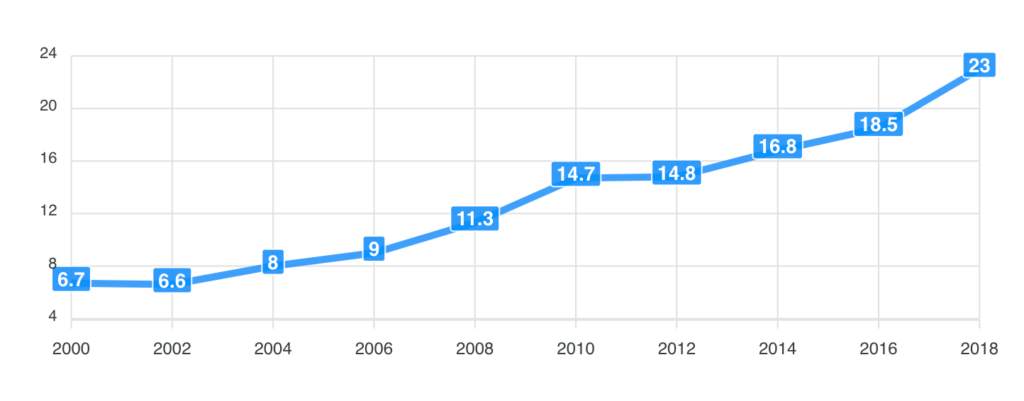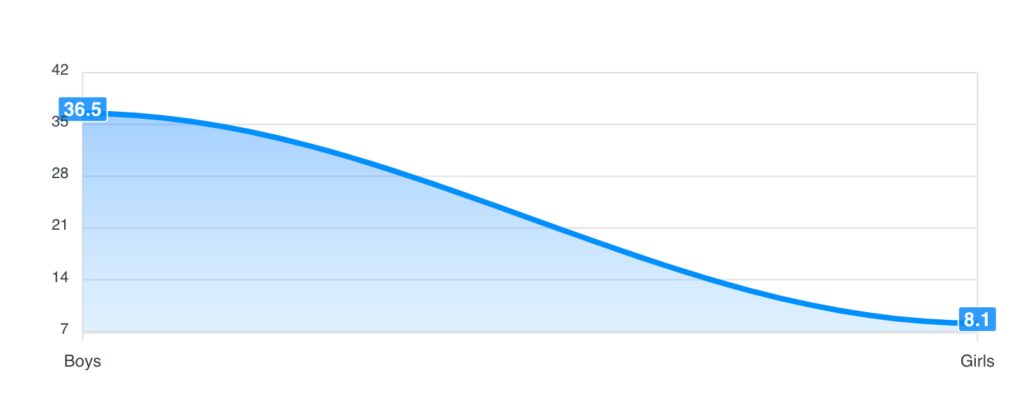Autism and Developmental Disabilities Monitoring (ADDM) Network - Autism Prevalence

The Autism and Developmental Disabilities Monitoring (ADDM) Network, supported by the CDC, focuses on determining the prevalence of ASD and other developmental disabilities among children in diverse regions of the United States. This network operates through various programs and consistently applies the same methodology to gather information from the health and/or education records of children aged 8. The objective is to calculate the prevalence of ASD in 8-year-old children. Data specific to different communities have been compiled for the years 2000 through 2018.
The variation in prevalence estimates is attributed to the differing methodologies of data collection. These methods vary in terms of the geographical areas covered, the timeframes considered, the age and racial/ethnic demographics involved, and the criteria used for diagnosing ASD. As a result, the data reported from various sources tend to show discrepancies, making direct comparisons challenging.

The Observed Trends in ASD Prevalence Over Time
Recent years have seen a rise in the reported prevalence of Autism Spectrum Disorder (ASD), a pattern observed across various data sources. This increase might be partly due to the evolving clinical definition of ASD, which now encompasses a broader range of individuals, and improved diagnostic efforts leading to the identification of previously unrecognized cases. Additionally, an actual increase in ASD cases cannot be ruled out and may result from multiple contributing factors. To explore how prevalence estimates have shifted over time, select a data source from the options provided.
It’s important to note that the ADDM Network data are not comprehensive for entire states in the U.S. They represent only selected sites within states that received funding during each project cycle, thus limiting their geographical coverage.
**The ADDM estimate reflects the combined total from all included sites.
Reported ASD Prevalence Varies by Sex
The prevalence of Autism Spectrum Disorder (ASD) since the initial reporting period in 2000 by the Autism and Developmental Disabilities Monitoring (ADDM) Network has consistently shown higher rates in boys compared to girls at all ADDM sites. The reasons behind this gender disparity are not fully understood. It’s possible that boys have a higher risk of developing ASD. Additionally, ASD may present differently in boys and girls, influencing the methods of detection, diagnosis, and reporting. To understand how prevalence estimates differ by gender, select the data source provided below.

Reported ASD Prevalence Varies by Ethnicity
Historically, the Autism and Developmental Disabilities Monitoring (ADDM) Network has observed that non-Hispanic white children are more frequently diagnosed with Autism Spectrum Disorder (ASD) than non-Hispanic black or Hispanic children. This discrepancy may stem from various factors, particularly for Hispanic children, such as:
1. Societal stigma,
2. Limited access to healthcare services due to factors like non-citizenship or low income,
3. Language barriers, with a primary language other than English.
This disparity in identifying non-Hispanic black and Hispanic children with ASD compared to their non-Hispanic white counterparts suggests that certain children may not be receiving the necessary services to achieve their full potential.
By 2018, data from the ADDM Network indicated no significant difference in the percentage of 8-year-old children identified with ASD across Black, White, Hispanic, and Asian or Pacific Islander groups. Nonetheless, in some locations, the percentage of Hispanic children diagnosed with ASD was lower than that of Black or White children. The narrowing of these racial and ethnic disparities over time might be attributed to more effective community outreach and inclusive screening practices for ASD in diverse populations.

What does the CDC say about Autism?
The CDC works 24/7 to protect America from health, safety and security threats, both foreign and in the U.S. Click the boxes below to learn what the CDC says about ASD.
Identifying Autism Spectrum Disorder (ASD) can be challenging as it lacks a definitive medical test, such as a blood test, for diagnosis. Instead, physicians assess the child’s developmental and behavioral patterns to determine the presence of ASD.
ASD can potentially be identified as early as 18 months. By the age of 2, a diagnosis made by a skilled professional is generally regarded as highly dependable. Yet, a definitive diagnosis often comes much later for many children. This postponement in diagnosis can result in a delay in receiving early intervention, which is crucial for children with ASD.
At present, there is no known cure for Autism Spectrum Disorder (ASD). However, studies indicate that early intervention treatments can significantly enhance a child’s developmental progress. These early intervention services are aimed at children from birth to 3 years of age (36 months), focusing on developing vital skills. They may encompass therapies to assist the child in developing speech, mobility, and social interaction capabilities. Consequently, if you suspect your child might have ASD or any developmental issues, it is crucial to consult with your child’s healthcare provider promptly.
Children who have not been formally diagnosed with ASD might still be eligible for early intervention treatments. Under the Individuals with Disabilities Education Act (IDEA), children younger than 3 years (36 months) who are potentially at risk of developmental delays can qualify for these services. These are available through an early intervention system in each state, where you can request an evaluation for your child.
Furthermore, specific symptom treatments, like speech therapy for language delays, often do not require a formal ASD diagnosis before beginning.
The full range of causes for Autism Spectrum Disorder (ASD) remains unknown, but it is believed to arise from multiple sources, leading to various types of ASD. A combination of factors, including environmental, biological, and genetic influences, may increase a child’s likelihood of developing ASD.
It is widely accepted among experts that genetics play a key role as a risk factor in the development of ASD. The risk is higher for children who have a sibling diagnosed with ASD. Additionally, individuals with specific genetic or chromosomal disorders, like fragile X syndrome or tuberous sclerosis, are more prone to developing ASD.
Certain medications prescribed during pregnancy, namely valproic acid and thalidomide, have been associated with a heightened risk of ASD. Research suggests that the critical window for the development of ASD is around the time before, during, and immediately after birth. Furthermore, children of older parents face an increased risk of ASD.
ASD remains a critical issue in public health. The Centers for Disease Control and Prevention (CDC), along with families impacted by ASD, are dedicated to uncovering the causes of this disorder. Gaining a deeper understanding of what predisposes an individual to ASD is crucial. To this end, the CDC is conducting one of the most extensive studies in the U.S., named the Study to Explore Early Development (SEED). This study investigates various potential risk factors for ASD, encompassing genetic, environmental, pregnancy-related, and behavioral factors.
ASD affects individuals across all racial, ethnic, and socioeconomic backgrounds. However, it is observed to be approximately four times more prevalent in boys than in girls.
For more than ten years, the CDC’s Autism and Developmental Disabilities Monitoring (ADDM) Network has been tracking the prevalence of ASD among children in the United States. This monitoring has provided substantial insights into the number of U.S. children affected by ASD. Continuously employing these tracking methods over time is vital to understand the evolving trends and learn more about the nature of the disorder.



